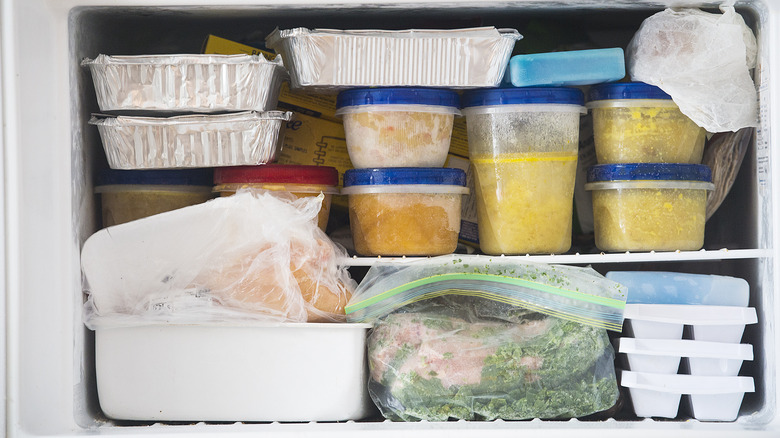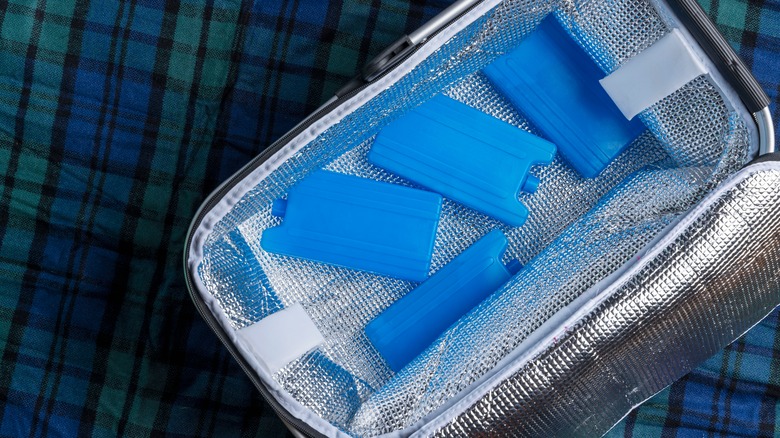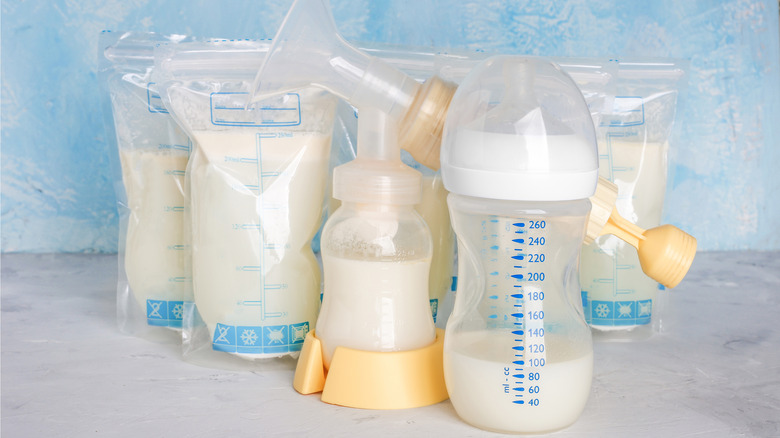Follow These Rules If You Want To Pack Frozen Food In Your Luggage
Navigating the Transportation Security Administration's rules regarding what can and cannot be brought on flights can be confusing. Apart from the 3-1-1 liquid rule that has been drilled into frequent flyers' brains, the rest of them can be tricky to comprehend, no matter how often you fly. You can bring food, but it must not be liquid, even if it's peanut butter or in the form of spreads and jams. You can, however, include fresh eggs in your carry-on. Those are apparently not considered liquid, according to the TSA.
Live fish and live lobster in water are permitted, too, so long as they are inside a clear, spill-proof container. So yes, you may not be able to bring your tub of moisturizer and a full-size bottle of your favorite shampoo, but you absolutely can bring Nemo swimming in water, provided that you have the proper container for it. TSA's rules don't always make sense, that's for sure, but the organization is apparently already looking to update its antiquated system. "I don't think anyone is saying that the way we did things [is] the way we will do things," J. Matt Gilkeson, director of TSA's Innovation Task Force, told The Washington Post. "We want to be beyond where we were 20 years ago."
It's unclear when we'll see significant changes, so for now, we have no choice but to abide by the agency's stringent policies. For the most part, you can bring nearly everything non-liquid. Things only get tricky when an item is frozen.
Consider bringing a cooler
The good news: The Transportation Security Administration has no problem approving frozen food items to get through security. The bad news: You must ensure that they don't contain any liquid. You are permitted to bring frozen meat, seafood, and vegetables in either your carry-on or checked luggage, but if you're opting for the former, it's important that the food hasn't melted even a tiny bit when it goes through the X-ray machines.
According to TSA's website, you also have the option to pack the food with ice or ice packs in a cooler, which makes sense if you want to keep it frozen. But the kicker is that the ice or ice pack cannot have melted during the inspection. TSA reiterated this rule on Twitter when someone asked about the same thing. "Ice packs used to keep food cold are allowed in carry-on bags but must be frozen solid when presented for screening. If not, they must follow our liquids rule of 3.4 ounces or less," they wrote.
It's also worth mentioning that dry ice may be permitted, but the TSA advises that it's best to check with your airline. Generally, though, the Federal Aviation Administration has a limit of 2.5 kg or 5.5 lbs of dry ice per passenger.
Medically necessary food and liquids are fine to bring, frozen or otherwise
The only time the Transportation Security Administration will allow you to bypass their liquid rule is if your item is considered "medically necessary." Case in point: The agency issued a lengthy memo about bringing breast milk, formula, toddler food like puree, and toddler drinks, stating that they are permitted even if they go over the 3.4-ounce limit. This exception even extends to things that help cool the aforementioned items, like ice packs and gel packs. What's more, the child doesn't necessarily have to be on the flight for the TSA to let these items pass inspection. But they suggest that you put all these in clear containers to expedite the screening process.
It's a different story when it comes to other "medically necessary" items like liquid medication. The TSA allows them as long as they are in "reasonable quantities." They also advise that you inform a TSA officer when you're at the security checkpoint, as these items will undergo a different screening process. If they trigger an alarm, however, there may be a chance that you can't bring them altogether.
Per the TSA, the 3-1-1 rule doesn't apply to certain items, but only if they are needed to be consumed in mid-flight, cannot be acquired past the security checkpoint, and aren't available at your destination. Funnily enough, contact lens solutions don't have to be declared, but hey, rules are rules.


